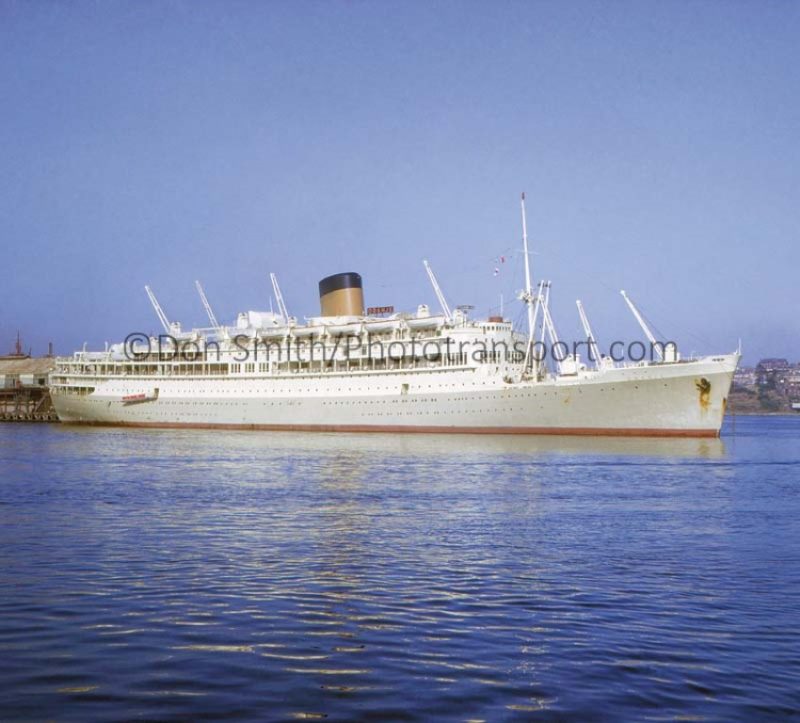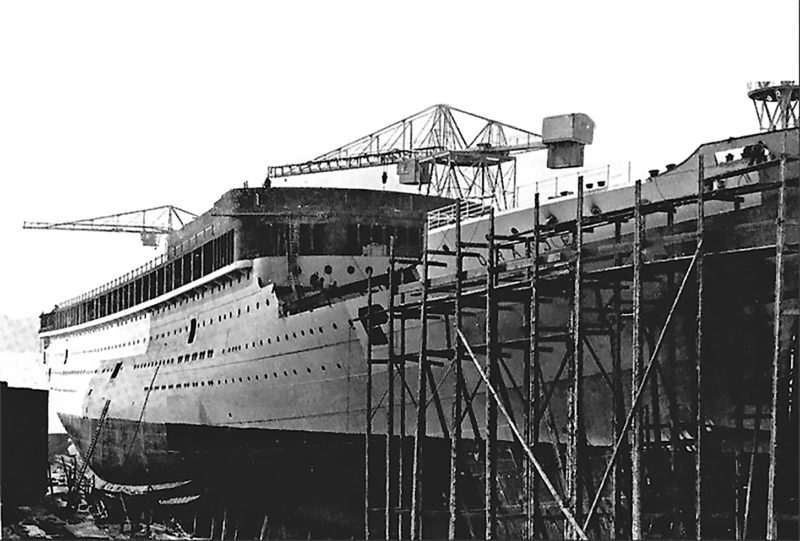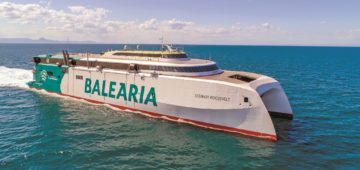
Few place names conjure images as evocative as the Dutch East Indies, the string of islands that now constitute the Republic of Indonesia. The Netherlands’ tenuous hold on this land (only in the 20th century did they gain anything approaching full control), initially through the famous East India Trading Company and later by direct colonial rule, was facilitated from 1870 by two new steamship lines. The first of these was based in the Dutch capital, Amsterdam and called Stoomvaart Maatschappij Nederland, although it was universally known as Nederland Line.
Sixty seven years after the company’s inception, work began on a new flagship. When the first keel plates were ceremonially laid on the stocks of slipway number three at Nederlandsche Scheepsbouw Maatschappij (NSM) on 2nd July 1937 it signalled both a significant investment for the owner and a revival of the yard’s fortunes. NSM had struggled since the onset of the depression, but as orders built up there was renewed optimism and a burgeoning workforce. That confidence took tangible form with Oranje, then known simply as yard number 270.
Fourteen months after the keel laying Queen Wilhelmina arrived at the NSM yard on the banks of the IJ waterway, having travelled by royal barge, to perform another ceremony and bestow the royal house’s name on the new liner. To the embarrassment of shipyard management, once the celebratory Champagne smashed across her bows the newly christened Oranje stayed firmly on the slipway. That garlanded hull remained obstinately fixed in position for over an hour until finally released into her element by the application of hydraulic rams.

The new liner represented the second instalment of Nederland Line’s rebuilding programme, adding to the incumbent 19,787grt flagship Johan Van Oldenbarnevelt which had entered service in May 1930 as the largest Dutch passenger liner to date. The hull that belatedly slid into the IJ on that late summer afternoon was of a quite unique and extraordinary shape. Utterly conventional from abeam she had a gently raked, flared bow and a neatly curved spoon stern. The subtlety of these features was totally eclipsed by the head on view which revealed the most exaggerated tumblehome of any twentieth century passenger ship. Like some 18th century man-o’-war the new ship’s beam was a full 5m (about 17ft) broader at the waterline than where the hull and superstructure converged, a feature conceived by the shipyard’s chief designer Huibert Prins to resolve a seemingly impossible set of conflicting priorities from the shipping line. The new vessel’s overall draft and beam at main deck level needed to match existing tonnage in order to permit access to shallow East Indian ports and maintain the same Suez Canal toll rate charges respectively. However Nederland Line also wanted a higher service speed, allowing passage from Amsterdam to Batavia in three weeks. This would necessitate larger, heavier and more powerful machinery as well as an increased fuel load. Prins’s unique compromise solution ultimately met all these demands, whilst also providing the requisite stability and speed.

Fitting out the new liner took a further nine months. The completed ship had a handsome profile topped by a lofty, centrally placed tapering funnel. Perhaps the only oddity was that the tall foremast and booms had no balancing mainmast, instead cranes proliferated on the tiered aft decks to service the associated cargo hatches. On her flanks the pale grey hull and open promenades betrayed her tropical itinerary.
There were eight passenger decks, ranging from the lofty Boat Deck, adjacent to the funnel, all the way down to D Deck. Acres of open and sheltered promenades and sunbathing space included an outdoor swimming pool on Sports deck. Standard vertical class divisions applied, with First class forward and centre, Second class heading aft and Third/Fourth crammed into the stern. The principle public rooms for First and Second class passengers (each had a smoking and lounge/music room) were situated on Promenade Deck, the top tier also enjoyed the forward Veranda with its tall windows affording a 270 degree view over the bow and flanks. Restaurants for all classes (Fourth shared Third’s public rooms) were low down on C deck served by a centrally placed main galley.

Subscribe today to read the full article!
Simply click below to subscribe and not only read the full article instantly, but gain unparalleled access to the specialist magazine for shipping enthusiasts.





Comments
Sorry, comments are closed for this item